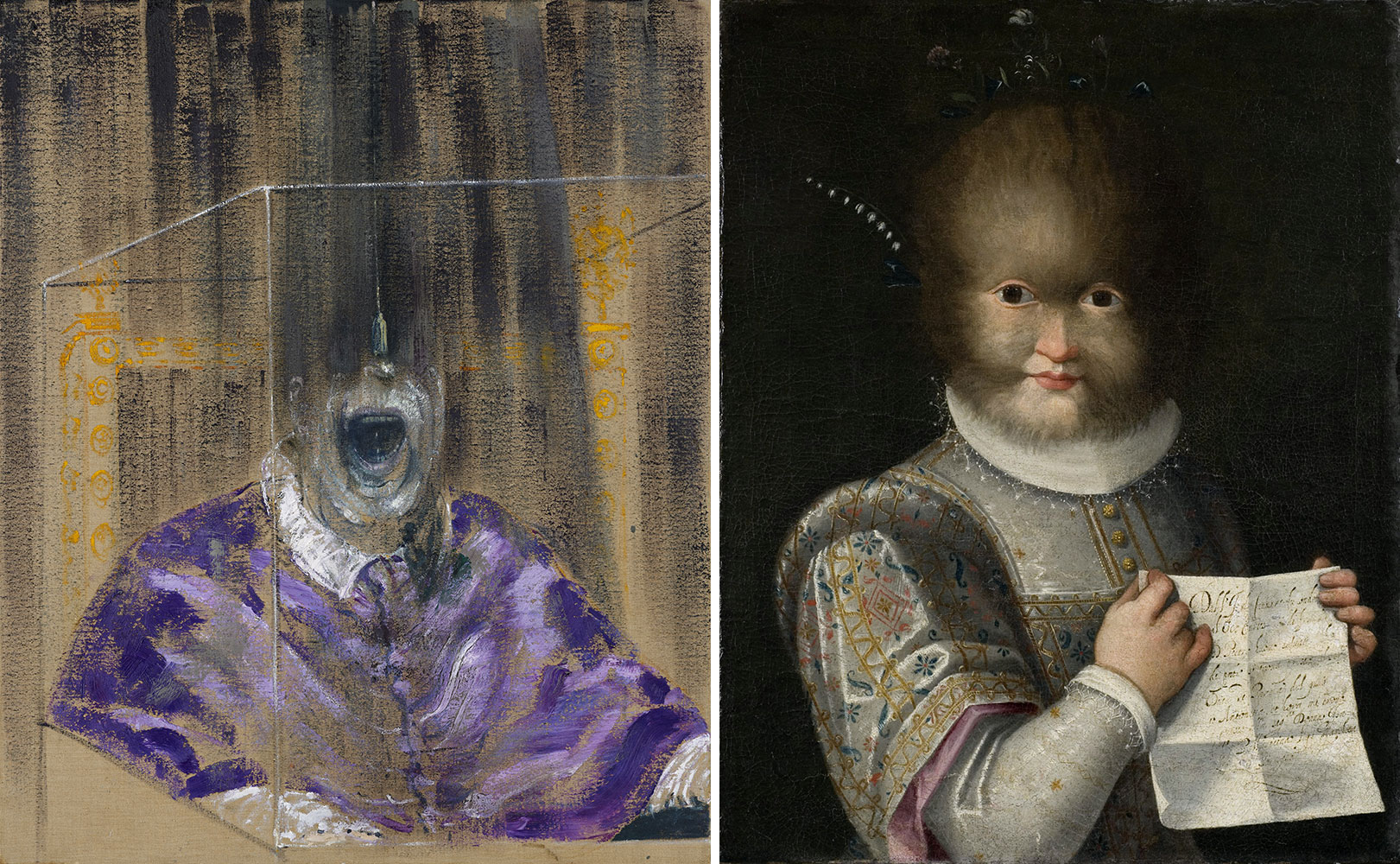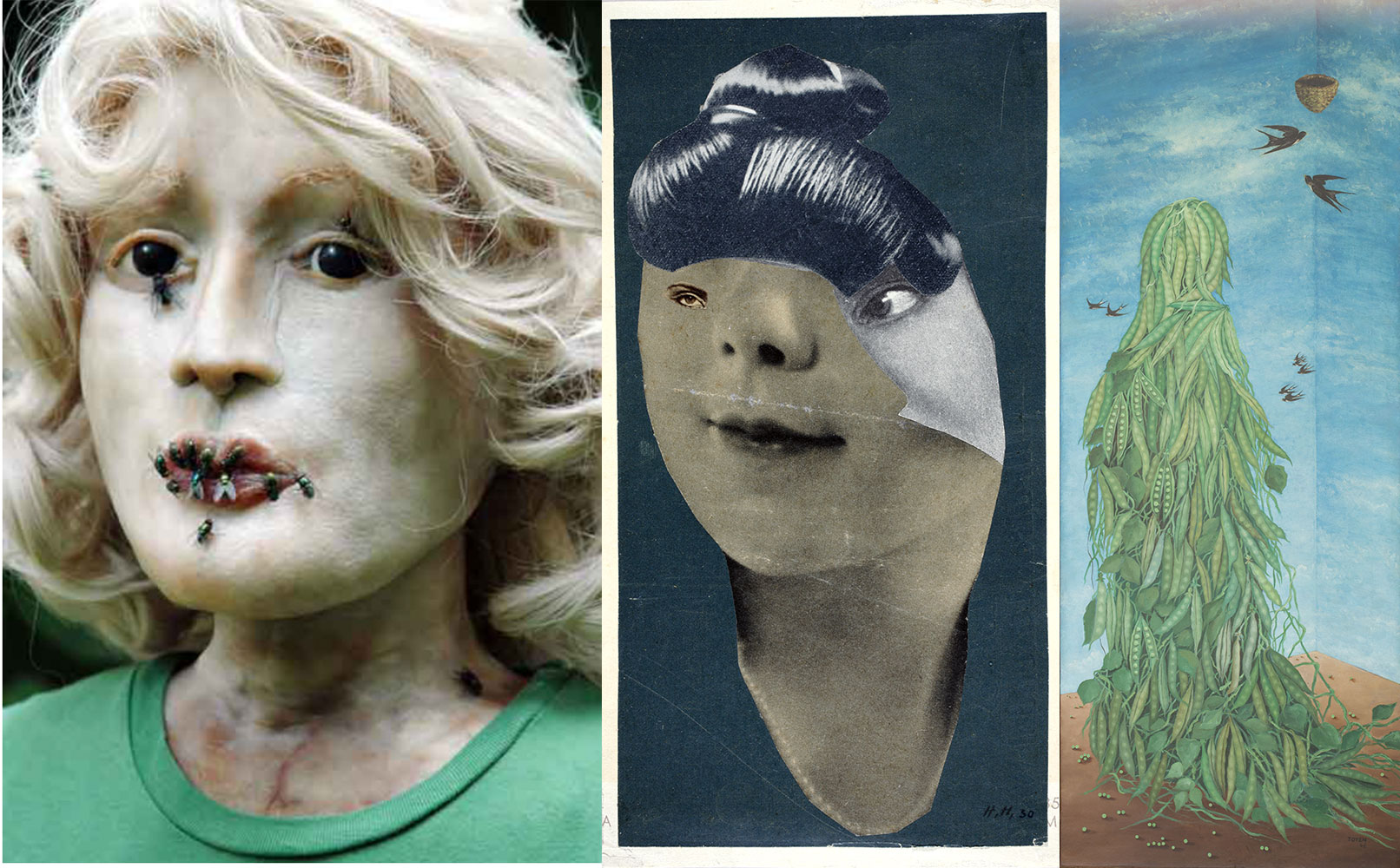ART-PRESENTATION: Arcimboldo Face to Face, Part III
 Conceived in a dialogue between Maurizio Cattelan and Chiara Parisi with Anne Horvath, the exhibition “Arcimboldo Face to Face” offers an unprecedented journey, away from any chronology, into the meandering thought and timeless vocabulary of this mysterious 16th Century painter Giuseppe Arcimboldo, known for creating imaginative portrait heads made entirely of objects such as fruits, vegetables, flowers, fish and books (Part I, Part II).
Conceived in a dialogue between Maurizio Cattelan and Chiara Parisi with Anne Horvath, the exhibition “Arcimboldo Face to Face” offers an unprecedented journey, away from any chronology, into the meandering thought and timeless vocabulary of this mysterious 16th Century painter Giuseppe Arcimboldo, known for creating imaginative portrait heads made entirely of objects such as fruits, vegetables, flowers, fish and books (Part I, Part II).
By Dimitris Lempesis
Photo: Centre Pompidou-Metz Archive
Although Arcimboldo’s composite portraits are now universally known, the richness and diversity of his work remains to be discovered. Giuseppe Arcimboldo (1526-1593) was an inventor and a thinker whose thoughts and works go far beyond the question of portrait painting. André Breton naturally included Arcimboldo in the pantheon of ‘pre-Surrealist’ artists during the Exposition Internationale du Surréalisme in Paris in 1947, the interlocking meanings of his double images participating in their favourite games. Salvador Dalí endlessly explored the mechanisms both of the double meaning and trompe-l’oeil, illusion being the product of images transferred to tracing paper which, once superimposed, revealed a very different composition. As for, Max Ernst and Victor Brauner, they used allegory to ridicule the absurdity of totalitarian power. The exhibition “Arcimboldo Face to Face” shows how his work has been influencing art history for five centuries and could shed a light on a number of current philosophical and political debates. The exhibition reflects the current state of art through the eyes of 130 artists, whose selection was guided by the influence – assumed, unconscious or fantasized – that the Lombard master exerts on their thinking and art. Each of the 250 works in the exhibition bears the imprint of Arcimboldo’s unique creative freedom and follows a golden thread through the centuries until the present day. Upon entering the Grande Nef of Centre Pompidou-Metz, visitors are confronted with the experience of Mario Merz’s installation, recomposed in its three original parts for the first time since 1987” the “Tribute to Arcimboldo”, “Cono” and “Table de Chagny” with fruits and vegetables following the rhythm of the seasons. Francis Bacon’s “Head VI” (1949) is presented next to Hannah Höch’s collages; Wolfgang Tillmans’ “Anders (Brighton Arcimboldo)” (2005) is presented next to Otto Dix’s “Study in the Catacombs of Palermo” (1924); Cindy Sherman’s “Untitled (#155)” (1985) interrogates Hans Bellmer’s “Doll” (1935-36). Elsewhere in the exhibition, the frescoes of Pompeii illuminate the masks of the store where James Ensor spent his life. Offering ample openings within its structure, the architectural space allows for the visitor to come across the new creations by Fernando and Humberto Campana, the monumental phosphorescent fountain “Hills and Clouds” (2014) by Lynda Benglis, the “Garden Guardian” (17th century) – the only existing Arcimboldesque sculpture, or the secret “Prague cabinet” by legendary contemporary surrealist filmmaker Jan Švankmajer. Further on, Pierre Huyghe’s video “Untitled” (Human mask) (2014) and Zoe Leonard’s portraits of the bearded woman from the Orfila Museum (1991) stand alongside each other. Just as the surrealists considered Arcimboldo as an endless source of inspiration, this face-to-face with Arcimboldo is also carried on by the contemporary scene. Recent works by Kerstin Brästch, Felix Gonzàlez-Torres, Rashid Johnson, Ewa Juszkiewicz, Cally Spooner, Hans-Peter Feldmann, and Ed Ruscha all bear witness to the importance of Arcimboldo’s vision to the education of generations of artists, from the past and the present. The installation “Le désir attrapé par le masque”, especially created for this exhibition by Annette Messager, unfolds in the form of a farandole of masked animals evoking the bizarre and the unknown, the ugly and the seductive, opening a reflection on hybridisation.
Photo: Mario Merz, Installation at the exhibition “The Arcimboldo Effect” at Palazzo Grassi, 1987, © Adagp, Paris, 2021, Photo: Salvatore Licitra
Info: Curators: Chiara Parisi, Anne Horvath, Maurizio Cattelan, Patricia Falguières, and Antonio Pinelli, Centre Pompidou-Metz, 1 parvis des Droits-de-l’Homme, Metz, France, Duration: 29/5-22/11/2021, Days & Hours: Mon, Wed-thu 10:00-18:00 (1/5-31/10) & Mon, Wed-sun 10:00-18:00 (1/11-31/3), www.centrepompidou-metz.fr


Right: Lavinia Fontana, Antonietta Gonzalvus, circa 1595, Oil on canvas, 57 x 46 cm, Blois, castle, Museum of Fine Arts, © Royal Castle of Blois I F. Lauginie

Center: Hannah Hoch, German Girl, 1930 Collage on cardboard, 21.6 × 11.6 cm, Berlinische Galerie – Landesmuseum für Moderne Kunst, Fotografie und Architektur © Adagp, Paris, 2021
Right: Toyer, The Future of Liberty, 1946, Oil on canvas, 165 x 65 cm, Private collection, © Adagp, Paris, 2020

![Left: Pablo Picasso, La Guenon et son petit, Vallauris, October 1951, Plaster, ceramic, two small automobiles and metal, 56 × 34 cm, Paris, national Picasso museum, © Succession Picasso 2021, Photo © RMN-Grand Palais (Musée national Picasso-Paris) / Mathieu Rabeau Right: Anonymous, Custode dell’orto [Guardian of the garden], second half of the 17th century, Stoneware, 197 × 72 × 81 cm, Bergamo, Ernesto Della Torre Piccinelli collection, © Collection Ernesto Della Torre Piccinelli / Fotostudio Rapuzzi](http://www.dreamideamachine.com/web/wp-content/uploads/2021/06/05b.jpg)
Right: Anonymous, Custode dell’orto [Guardian of the garden], second half of the 17th century, Stoneware, 197 × 72 × 81 cm, Bergamo, Ernesto Della Torre Piccinelli collection, © Collection Ernesto Della Torre Piccinelli / Fotostudio Rapuzzi
